





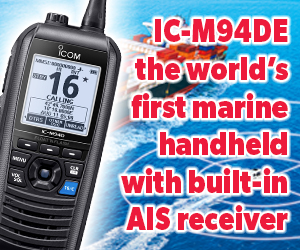

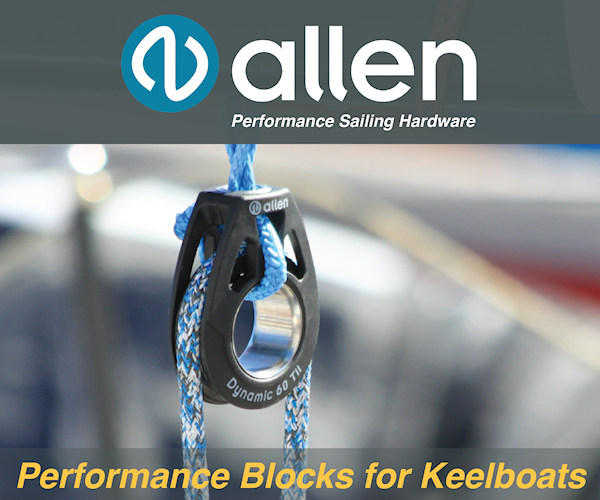


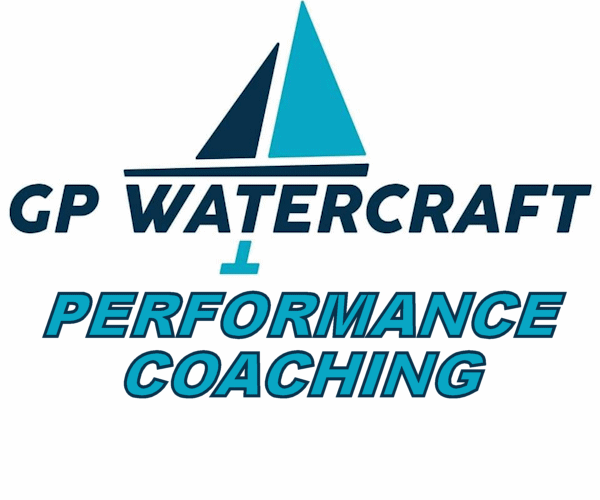
Boats for sale
| Rossiter Pintail Mortagne sur Gironde, near Bordeaux |
 |
| Laser 140101 Tynemouth |
 |
| Laser 28 - Excellent example of this great design Hamble le rice |
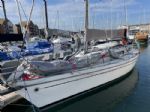 |
List classes of boat for sale |
Lee-Bow..... Windsurfers...etc (Dons tin hat) |
Post Reply 
|
Page <1 1617181920 36> |
| Author | |
Guests 
Guest Group 
|
 Post Options Post Options
 Quote Quote  Reply Reply
 Topic: Lee-Bow..... Windsurfers...etc (Dons tin hat) Topic: Lee-Bow..... Windsurfers...etc (Dons tin hat)Posted: 26 Sep 19 at 5:43pm |
|
If you can't explain its relevance than yes, we are.
Hull drag might be 200 newtons, so about 20 kg of tension in that ferry line... how will that force get to the sailing boat if it's not attached via a line? How does the energy transfer? Is there a magnetism or induced electrical current I'm missing?
Edited by mozzy - 26 Sep 19 at 5:54pm |
|
 |
|
423zero 
Really should get out more 
Joined: 08 Jan 15 Location: United Kingdom Online Status: Offline Posts: 3420 |
 Post Options Post Options
 Quote Quote  Reply Reply
 Posted: 26 Sep 19 at 5:51pm Posted: 26 Sep 19 at 5:51pm |
|
Posters who find thread boring, don't read, start a thread you find interesting.
Some posts are very oppressive and smack of censorship. |
|
|
Robert
|
|
 |
|
iGRF 
Really should get out more 
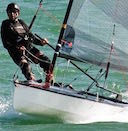
Joined: 07 Mar 11 Location: Hythe Online Status: Offline Posts: 6499 |
 Post Options Post Options
 Quote Quote  Reply Reply
 Posted: 26 Sep 19 at 6:10pm Posted: 26 Sep 19 at 6:10pm |
Got it. This is wrong and fundamentally what it appears you cannot or refuse to grasp, in a sail craft there are TWO sources of energy. Just as that article in Sailing Today was wrong to suggest that you should think that the yacht is sailing inside a tank full of water being conveyed by the current, which is what appears to be the gist of your argument. Both fluids contain energy to be harnessed, sorry it's a fact and don't ask me to draw you a vectorgram whatever.. |
|
 |
|
Sam.Spoons 
Really should get out more 
Joined: 07 Mar 12 Location: Manchester UK Online Status: Offline Posts: 3401 |
 Post Options Post Options
 Quote Quote  Reply Reply
 Posted: 26 Sep 19 at 6:27pm Posted: 26 Sep 19 at 6:27pm |
I can accept that, maybe, the ferry example is not the best but in the kayak example, the principle works in exactly the same way as it would with a sailboat. I'll try to draw out what I'm thinking, maybe that will show me that I'm wrong but if it does it will have helped me understand. |
|
|
Spice 346 "Flat Broke"
Blaze 671 "supersonic soap dish" |
|
 |
|
423zero 
Really should get out more 
Joined: 08 Jan 15 Location: United Kingdom Online Status: Offline Posts: 3420 |
 Post Options Post Options
 Quote Quote  Reply Reply
 Posted: 26 Sep 19 at 6:49pm Posted: 26 Sep 19 at 6:49pm |
|
The only empirical science is mathematics, everything else is theory, latest theory on flight still relies on Bernoulli theory for part of maths, but they still acknowledge it might be wrong, movement through water exactly the same.
|
|
|
Robert
|
|
 |
|
JimC 
Really should get out more 

Joined: 17 May 04 Location: United Kingdom Online Status: Offline Posts: 6662 |
 Post Options Post Options
 Quote Quote  Reply Reply
 Posted: 26 Sep 19 at 7:04pm Posted: 26 Sep 19 at 7:04pm |
Ah, well now we have to be very careful, because there are considerable traps for the unwary here. The energy to *sail* comes from the difference in velocity between air and water, and that energy is the same whether there's 5 knots of tide and no wind, or 5 knots of wind and no tide. And as we should all know, if there's 5 knots of wind and 5 knots of tide in the same direction, we feel no wind on the boat and can't sail. After the boat has passed both wind and water are moving at a lower *relative* velocity, be it all in eddies and things. However the current is also moving the boat (or not) in a separate energy mechanism where the boat just drifts, the moving carpet if you like, and that moving carpet is providing energy from a different mechanism. And that adds or subtracts from the wind/water relative motion energy. Edited by JimC - 26 Sep 19 at 7:07pm |
|
 |
|
Oatsandbeans 
Far too distracted from work 
Joined: 19 Sep 05 Location: United Kingdom Online Status: Offline Posts: 382 |
 Post Options Post Options
 Quote Quote  Reply Reply
 Posted: 26 Sep 19 at 7:16pm Posted: 26 Sep 19 at 7:16pm |
|
No it doesn’t-the movement of the water wrt the ground has not affect at all on the motion of the boat through the water.
|
|
 |
|
Oatsandbeans 
Far too distracted from work 
Joined: 19 Sep 05 Location: United Kingdom Online Status: Offline Posts: 382 |
 Post Options Post Options
 Quote Quote  Reply Reply
 Posted: 26 Sep 19 at 7:31pm Posted: 26 Sep 19 at 7:31pm |
|
Let me add -apart from any affect that the movement of the water has on the apparent wind on the sails (the vector sum of the true wind and the tide induced wind)
|
|
 |
|
iGRF 
Really should get out more 

Joined: 07 Mar 11 Location: Hythe Online Status: Offline Posts: 6499 |
 Post Options Post Options
 Quote Quote  Reply Reply
 Posted: 26 Sep 19 at 7:50pm Posted: 26 Sep 19 at 7:50pm |
|
All the above is true.
So, it follows that the statement I made much earlier that the true test of a sailors skill in low energy situations, is his /her's ability to maximise both sources of energy into forward movement in the direction required. Ergo if that means altering the angle of attack of either set of foils in order to gain extra energy, then the net increase in energy will result in more efficient forward motion. Lift as I remember correctly it is a result of both the Bernoulli principle and the AoA. Do we have to go into Bernoulli and principles of Fluid & Aerodynamics? Edited by iGRF - 26 Sep 19 at 7:54pm |
|
 |
|
Do Different 
Really should get out more 
Joined: 26 Jan 12 Location: North Online Status: Offline Posts: 1312 |
 Post Options Post Options
 Quote Quote  Reply Reply
 Posted: 26 Sep 19 at 8:17pm Posted: 26 Sep 19 at 8:17pm |
|
I read recently that my schoolboy knowledge of lifting sections (Bernoulli principle) is a myth and lift is simply down to angle of attack.
I guess the different sections and now flaps and leading edge slats facilitate smooth flow at different angles of attack. |
|
 |
|
Post Reply 
|
Page <1 1617181920 36> |
| Forum Jump | Forum Permissions  You cannot post new topics in this forum You cannot reply to topics in this forum You cannot delete your posts in this forum You cannot edit your posts in this forum You cannot create polls in this forum You cannot vote in polls in this forum |
Bulletin Board Software by Web Wiz Forums® version 9.665y
Copyright ©2001-2010 Web Wiz
Change your personal settings, or read our privacy policy
Copyright ©2001-2010 Web Wiz
Change your personal settings, or read our privacy policy











 Printable Version
Printable Version Delicious
Delicious Digg
Digg Facebook
Facebook Furl
Furl Google
Google MySpace
MySpace Newsvine
Newsvine reddit
reddit StumbleUpon
StumbleUpon Twitter
Twitter Windows Live
Windows Live Yahoo Bookmarks
Yahoo Bookmarks Topic Options
Topic Options